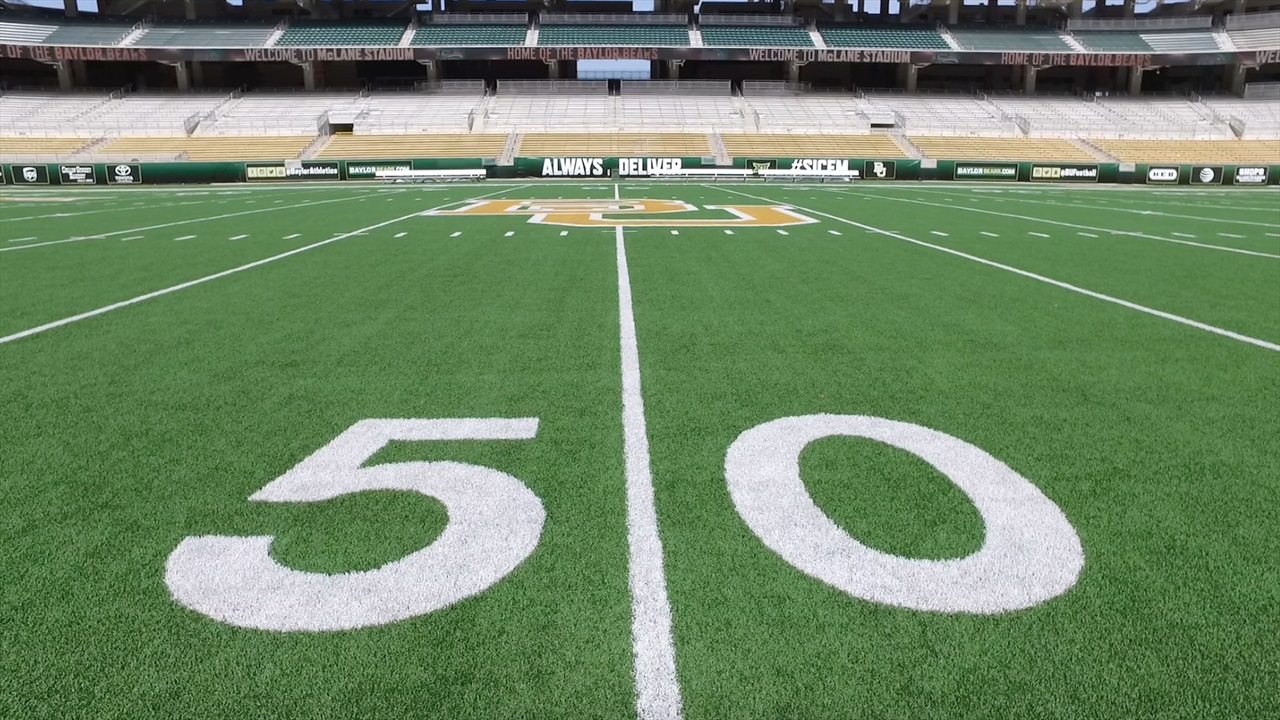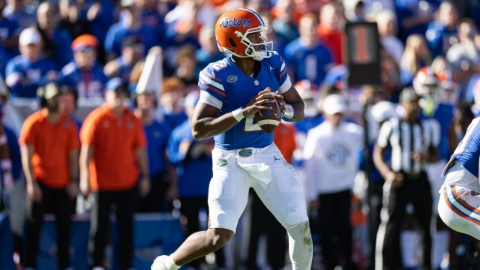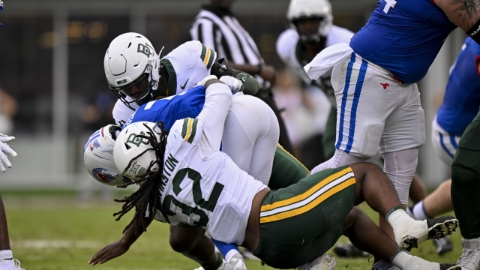Thank u for making this free. #HEXTEX

Jared
is a professional poker player and gambler that lives in Henderson, Nevada,
a Las Vegas suburb. He is a Midway grad and attended Baylor, before
moving on to a career in poker. He was won a World Series of Poker
bracelet and has nearly 4 million dollars in career tournament earnings
live and online. Also a sports nut and avid sports bettor, Jared enjoys utilizing statistics
to aid his analysis and opinions, and will bring specialized
content to SicEm365 focusing on how advanced metrics can impact our
match-ups, help you handicap games, and track our coaching
candidates in the current and past.
Follow Jared on Twitter!
Follow Jared on Twitter!
Many of us here enjoy watching football and analyzing what we see each week. We often discuss predictions and results of games with our family, friends, co-workers and rivals, and most of our thoughts and opinions are based on what we have seen in games and highlights. But as we all know, sometimes our eyes can be deceiving. This is why, in addition to watching, most fans and media track things like box scores, individual statistical leaders, and offensive and defensive team stats/ranks. It helps us supplement what we see with something that has tangible substance, and gives us a better understanding of team’s strengths and weaknesses.
If you are already familiar with advanced metrics in CFB, hop to the bottom of this article to see my analysis of Baylor v. Texas and my prediction.
OK, so why are you writing this?
I am here to expose you guys to some of the more popular advanced metrics that we have available, and then use them to analyze some of our match-ups. The problem that I have is many of the “traditional” stats we see referenced are very flawed, and the average fan has been trained to believe these numbers carry more importance than they do. There is no better example of this than total yards, which is often skewed by the style and pace of play on both sides of the ball.
A good example is Baylor. Due to the fast pace of our offense, Baylor’s defense is forced to defend more possessions than most teams, thus will give up more yards than a defense that is paired with a more methodical offense, obviously. A defense such as Army or Boston College will defend fewer possessions, due to their plodding offenses, thus give up fewer total yards (and logically, points). Baylor fans have discussed this concept many times on our message boards over the years, but the statistical inaccuracies go much further beyond total yards.
What else makes traditional stats poor? What are some positives of advanced metrics?
I personally can’t put any trust into a metric that doesn’t factor in strength of schedule. It’s very important to put stats into proper context, so tangibly adjusting for the quality of your opponents is essential for a stat to have real meaning. This is why even stats like yards and points per play/drive also cannot be trusted, without an adjustment (S11 does a nice job adjusting by comparing the results to previous opponents).
I find it helpful when field position is accounted for, as it’s such an important part of the game, but not quantified with traditional stats. It is also a good thing when metrics adjust for the variance of turnovers, isolating them from offense and defense production and efficiency. Or when they factor in things like home field advantage, special teams and offensive line play, or explosive play ability. There is so much more to football than points, yards, time of possession, penalties, and turnovers.
There are even metrics that will weigh less, or even not factor in at all, certain parts of the game due to the situation and score. If it is garbage time in a blowout, then why would we want those stats influencing us about what may happen next week in a big-time game? We likely don’t.
What metrics should I be using? Where can I find them?
There are many advanced metrics to choose from, but I have compiled a preferred list over the years. I even include one that I am not a huge fan of (ESPN FPI) for balance, and because it is somewhat relevant simply due to being ESPN’s metric.
Massey Ratings – Once an integral part of the BCS formula and used by oddsmakers. My personal favorite ranking system, as it isn’t as fluid (or even quirky) as some of the other advanced metrics (like S&P+). There are some fun tools like the Matchups tab, and some great stats, especially if you want to look beyond the 128 FBS teams.
Note: the Massey Power Ratings (Pwr) factor in margin of victory, and he uses those for predictions and matchups. He was forced to tweak his formula when the BCS removed MOV, so he has 2 rankings.
Baylor is #21/#19 in Massey, Texas #60/#55
Massey has Baylor winning Saturday over Texas 34-31 (-3.5 margin)
S&P+ – “The S&P+ Ratings are a college football ratings system derived from the play-by-play and drive data of all 800+ of a season's FBS college football games (and 140,000+ plays). The components for S&P+ reflect opponent-adjusted components of four of what Bill Connelly has deemed the Five Factors of college football: efficiency, explosiveness, field position, and finishing drives. (A fifth factor, turnovers, is informed marginally by sack rates, the only quality-based statistic that has a consistent relationship with turnover margins.)”
This one can seem strange on the surface, but @SBN_BillC does a tremendous job explaining his methods, and may even engage you on Twitter if you ask questions. It can have some seemingly quirky ranks (teams that lose to good teams often do not drop), but has great value in assessing the quality of O/D/ST units, since it isolates them from game outcomes, which can cause bias.
Note: Connelly does some incredible work. Here is his week 9 article, complete with a Google Doc with all of his S&P and FEI picks. S&P+ is 57% against the spread (ATS) in the last 3 weeks.
Baylor is #11 in S&P+, Texas #45
S&P+ has Baylor winning 36.3-26.4 on avg
FEI – “The Fremeau Efficiency Index is a college football rating system based on opponent-adjusted drive efficiency.”
Only counts FBS vs FBS games. Can tell you things like Baylor has faced the #127 SOS so far, but has the #28 remaining SOS.
Baylor is #18 in FEI, Texas #58
F/+ Combined Ratings – This is simply FEI and S&P+ combined.
Baylor is #13 in F/+, Texas #50
F/+ has Baylor winning by 8.5
Football Power Index (FPI) – ESPN’s advanced metric. Hasn’t been my favorite over the years, but has its relevance. They are currently high on Texas this year (never change, ESPN).
Baylor is #19 in FPI, Texas #36
So what should we watch for on Saturday?
There aren’t any stats that can prepare you for what to expect once the games begin, but we can certainly get a more accurate idea of the strengths and weakness of Baylor and Texas by looking at the advanced metrics.What the Texas offense does well:
They have a balanced offense, but aren’t great at either the run or pass. According to S&P+, they rank #50 in both rushing and passing, giving them the #23 offense overall. Massey has been a little slower to come around on the Texas offense, ranking them #48. They do well on standard downs (passing down defined as 2nd and 8 or more, or 3rd or 4th down with 5 or more yards to go), with an S&P+ of #29. This indicates Texas does will when the defense must guess what is coming. FEI has Texas as the #47 offense, but the #23 when it comes to efficiency, which is impressive (OE is the value generated by a team's offense per non-garbage possession relative to national average scoring rates by starting field position).
What the Texas offense does poorly:
Here is something that really jumps out at me – on passing downs (described above) Texas has the #121 S&P+! This means when the defense knows Texas is likely to pass, they are shutting it down. If we can slow their run game and/or grab an early lead, we could force them into being a one-dimensional offense, which they haven’t yet shown they can do successfully.
What the Texas defense does well:
They are pretty good against the run at #43 rushing S&P+, and their defense is also successful on standard downs, ranking #30. They have an overall Success Rate of #50, which is pretty average for their talent level (Success Rate: A common Football Outsiders tool used to measure efficiency by determining whether every play of a given game was successful or not. The terms of success in college football: 50 percent of necessary yardage on first down, 70 percent on second down, and 100 percent on third and fourth down.)
What the Texas defense does poorly:
Defend the pass. They are #92 in passing S&P+ and #105 on passing downs. This team clearly struggles mightily in 2nd and 3rd and long spots (on both sides of the ball). If Russell is accurate, the Texas defense could be in for a long day. They haven’t yet shown the ability to slow down a legit passing attack. FEI isn’t any prettier for Texas, as they check in as the #74 overall defense.
What the Baylor offense does well:
Massey has Baylor as the #13 offense. One could argue we have not been that good this year, but he still factors in last season, and his metric is slower to change than others. But we are also #12 overall in FEI, and #7 in OE. Baylor is the #16 S&P+ offense, but just #41 in rushing and #55 in passing. We are boosted by a strong #22 rank on passing downs and are #38 in Success Rate.
What the Baylor offense does poorly:
We rank #62 in standard down S&P+. This means we aren’t dominating on 1st down, or on 2nd/3rd and short. That’s all I can find.
What the Baylor defense does well:
We have slowly crept up to the #46 Massey D, which is very high for us in that metric. But I feel we are being affected by the past, as we have played better than that this season. S&P+ agrees, and has us as the #13 overall defense. We are #37 against the pass and #27 on standard downs, meaning we are holding up well on 1st down and also short yardage situations. Our IsoPPP+ is #14 in the nation and measures explosiveness (think Stewart and Reid pick 6’s). We have the #41 FEI defense and are #14 in efficiency.
What the Baylor defense does poorly:
We have a strangely low Success Rate rank of #98. We are an average #64 in rushing S&P+. These are the only metrics that are cause for concern, at the moment.
Hambone’s prediction: Baylor 38, Texas 27
Never miss the latest news from SicEm365!
Join our free email list




